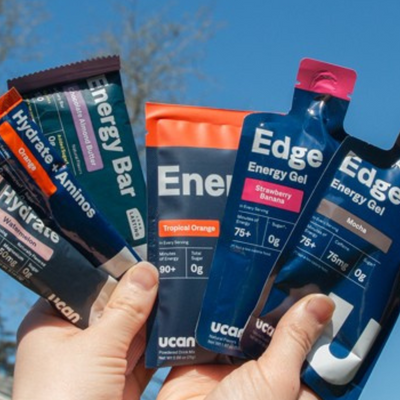By Nicci Schock, Certified Sports & Exercise Nutritionist, Metabolic Efficiency Training Specialist
As triathletes base-build to get ready to kick-off another racing season, they're setting goals for their competition and also goals for their weight. In doing so, many triathletes have a specific number in mind, commonly referred to as ‘race weight’. As a practitioner, this term makes me cringe every time I hear it. It’s not that the concept is bad, but the terminology and certain strategies associated with it lead athletes away from their goals instead of towards them.
In my experience, many athletes view race weight as just a number on the scale. They know that extra weight can be a disadvantage when racing, so they believe the lower the number the better. While it is true that extra weight can slow you down, the focus for an athlete should be on body composition instead of weight. It is a misconception that when the number on the scale goes down, the weight loss if from fat and fat alone. In reality, that lower number is composed of many reductions including bone loss, muscle loss, and fat loss. Let me repeat that - bone loss and muscle loss.
A few things a competitive athlete wants to keep, right? My first goal for every athlete is health. A healthy body can remain an active body, and the way you approach weight loss is a pivotal decision for your body. The following tips will help you get started on the right path:
Test don’t guess
Losing body fat will come down to managing energy balance. One size does not fit all, so blanket estimates are not appropriate when determining energy needs. Every individual is unique and utilizes energy from different sources in varying amounts. In order to safely determine how much energy you need and what is excess, a metabolic test is the way to go. The test will give you data on resting metabolic rate and exercise energy expenditure for various paces, so that your practitioner can determine appropriate food targets for easy days and harder days.
Take Home Message: Create a plan based on your individual data.
Training your metabolism to burn more stored fat
In the same way that you train your aerobic system through exercise, you can train your metabolism with food. The composition of your meals will help with satiety and cravings which assist in the energy balance equation by helping you to not overeat. Every meal should be a combination of protein, fat, and fiber. Protein is the macronutrient that is most satiating allowing you to stay fuller for longer periods of time, while also contributing to the maintenance of lean mass. Fiber slows down digestion and absorption of food keeping energy steady until the next meal time. Fat is essential to healthy hormone production making it important at every meal. Being consistent with this combination allows your body to stabilize blood sugar, making it easier to burn stored fat.
Take Home Message: Be thoughtful with your meals, choosing protein, fat, and fiber in each one.
Periodization and limiting large calorie deficits
One popular tactic to shed pounds is cutting calories with no regard for activity level. This is a sure way to wind up losing more lean mass than fat, potentially leading to injury and long-term hormonal harm. Easy and recovery days should have lower energy intakes, while long and strenuous days require more.
Take Home Message: Not every day should be the same. Even when changing body composition, your food intake will be dependent on your training schedule.
Limiting foods with low nutritional value
This seems easy and common sense, but when it comes down to it, many athletes like to treat themselves with sugary snacks after making progress in their workouts. Trading processed foods for high fiber foods, lean meats, and healthy fats will ensure that you're getting a wide array of nutrients. This can be overlooked by those who restrict calories while having daily diets composed of workout rewards. In times when there may be low energy availability, it is essential to provide your body with as many quality nutrients as possible. A prime scenario where it is easy to cut back on unnecessary energy intake is during workouts. In a base building phase, most workouts are at a duration and intensity that are easily sustained by fuel sources stored in your body, so you can skip the sugary sports drink/foods during your workout. Having a slow-releasing energy source pre-workout like LIVSTEADY can help you fuel your training and keep blood sugar stable without over-feeding.
Take Home Message: Keep nutrients high. Don’t overeat during your workouts.
Increasing and supporting the maintenance of lean mass
Lean mass is a more ‘expensive’ tissue for the body to maintain, meaning that it uses more calories than fat mass and in doing so increases your resting metabolic rate. This means that you don’t have to reduce food intake as much as you might think if you are able to maintain more lean mass. Athletes trying to shed fat unknowingly make decisions that put them on the wrong side of this equation. Remember when I said losing weight can mean losing muscle too? Less muscle means a lower resting metabolic rate. Three important habits for maintenance of lean mass are:- Have equal protein feedings throughout each day
- Prioritize protein in feedings immediately following a fasted run
- Optimize recovery and lean mass with a casein protein powder prior to bed








